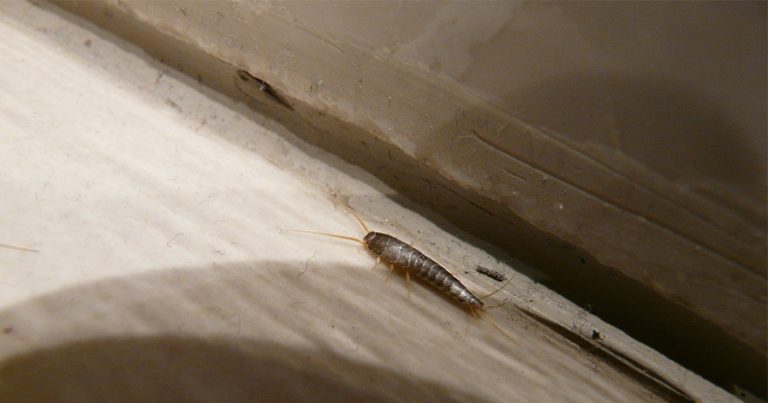The Best Way to Get Rid of Silverfish in Your Home
What Are Silverfish?
Silverfish bugs are wingless insects commonly found in dark places like cupboards. Sometimes called fishmoths, their scientific name is Lepisma saccharina. The saccharina is a reference to the fact that they eat long-chain sugars, including starches and cellulose. This makes their favorite foods paper, textiles, hair, dandruff and adhesives such as those used in book bindings. They will also eat the exoskeletons of other dead insects, like cockroaches, which are high in cellulose.
Since they are attracted to the cellulose found in some bath products, they are often found around showers or in bathrooms. These bugs have a special affinity for cupboards, attics and garages, which usually contain a wealth of their favorite foods.
Unlike other common household pests like bed bugs, silverfish pose no threat to humans beyond the damage they cause around the house. Some people find their long silvery bodies and bizarre undulating movements creepy – they get their common name from the fish-out-of-water swimming movements they make to move around, but they do not bite, nor do they carry transmissible diseases. After going through as many as 60 molts, they reach about an inch in length when fully mature. They run very fast, and if surprised by light will scurry to return to a dark location.
Silverfish Pest Control
Silverfish do not reproduce quickly. They lay only 50 to 100 eggs at a time, which they hide in crevices. Cleaning, in and of itself, is usually insufficient for silverfish pest control. If there is a large infestation, the building has probably been hosting silverfish for a long time. Keeping paper and fabrics in sealed containers rather than cardboard boxes can help, but silverfish can go for up to a year without eating. Thus, reducing potential food sources may help, but it alone will not eliminate the problem. Using mothballs or crystals can help with silverfish control.
Silverfish Extermination
To succeed at silverfish extermination, pesticides will need to be used. The general choices are desiccants and poisons. Desiccants will kill insects by drying their bodies when they crawl through it, dehydrating them. Boric acid may be purchased and used in the crevices where silverfish lay eggs. This is a safe choice in occupied buildings because boric acid has a low toxicity and remains effective for a long time. General-use household pesticides containing either synthetic or organic pyrethrins will kill silverfish as well.
Overall, it is fairly easy to control silverfish and similar bugs like firebrats and bristletails, but standard safety precautions should always be taken when using pesticides.

